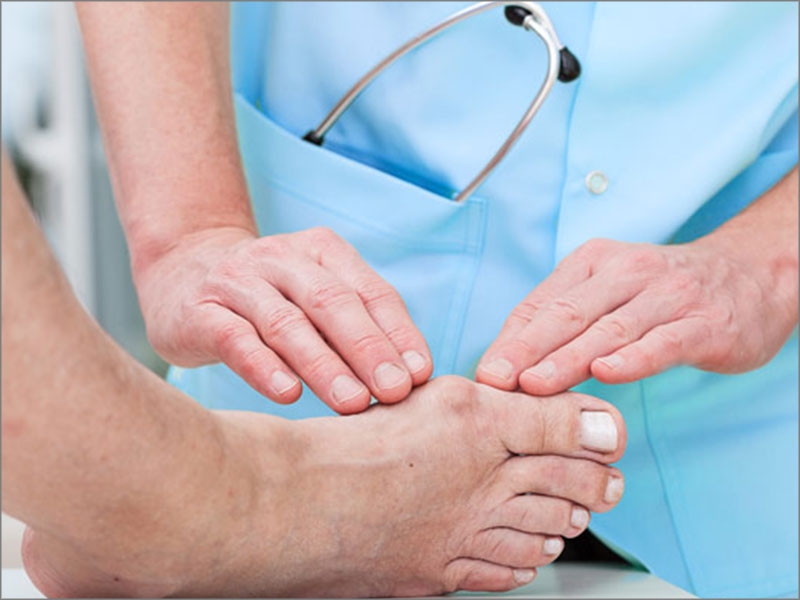"Bio" means life or living organism. "Mechanics" is the original discipline of physics as it applies to forces on matter. For our purposes, biomechanics is defined as the mechanics of the human body, especially the forces of the muscles and gravity on the skeletal structure of the lower extremity.
Foot Terminology:
Anatomic terms for location of body parts and motions are necessary for a

variety of reasons. We can not simply say "outside of the toe" because not everyone will agree on which part of the toe is the "outside."
Although it may seem simple to refer to the "top of the foot", as soon as the foot moves or is rotated or has a deformity, the top of the foot is no longer on top. Medical professionals need a uniform way to describe both locations and movements.
Definitions: Anatomic Locations
Medial means towards the center line of the body.
Lateral means away from the center line of the body.
Distal means further from the body.
Proximal means closer to the body.
Anterior means the front of the body
Posterior means the back of the body
Dorsal means the top of the foot
Plantar means the bottom of the foot
Looking at the foot diagram above, the big toe is medial and the little toe is lateral. The toes are distal to the midfoot and the midfoot is distal to the heel bone. The heel bone is proximal to the toes. The toes are also considered anterior to the midfoot and the heel sits posterior to the midfoot.
Definitions: Motions of the foot and ankle
Dorsiflexion: movement of the foot up.
Plantarflexion: movement of the foot down.
Abduction: movement of the foot away from the center line of the body.
Adduction: movement of the foot towards the center line of the body.
Inversion: twisting movement of the foot inward.
Eversion: twisting movement of the foot outward.
Supination and Pronation
Supination and pronation are a combination of the above motions. It is common to use supination and inversion interchangeably and pronation and eversion interchangeably. But, supination is actually a combination of inversion, plantarflexion and adduction. Pronation is a combination of eversion, dorsiflexion and abduction.
Supination is a triplanar motion involving the foot moving down and towards the center of the body.
Pronation is a triplanar motion of the subtalar joint involving the foot moving up and away from the center of the body.
To better understand supination, look at the right foot in the image below. The heel rotates towards the center of the body, the big toe moves towards the center of the body, the foot flexes down and the ankle rolls out.
To better understandpronation, look at the right foot in the image below. The heel rotates away the center of the body, the little toe moves away from the center of the body, the foot flexes up slightly and the ankle rolls in.
To understand these motions while standing, try this with your own feet. Stand with your feet parallel and facing foward. Rotate your body and look over your left shoulder, without moving your feet. Your left leg has rotated out (external leg rotation) and your weight will be on the outside of your left foot. Your left foot is supinated. Your right leg has rotated in (internal leg rotation) and your weight is on the inside of your right foot. Your right foot is pronated.
Foot Anatomy:
The foot is a complex structure of 28 bones (26 main bones and two small bones under the big toe), over 100 ligaments, multiple muscles and tendons which all work together to hold the weight of the entire body and help propel the human body. More pictures on foot anatomy.
I am really very happy to write the review about this hospital. Because I think that this MADURAI FOOT CARE CENTRE is the best foot care hospital. Doctor and staffs are good, I have seen many people coming to this hospital to treat their foot problems related to diabetic.
